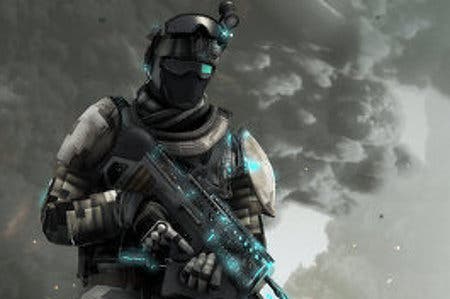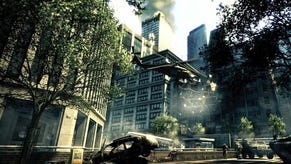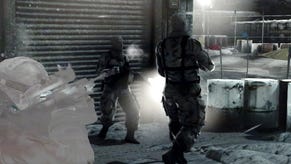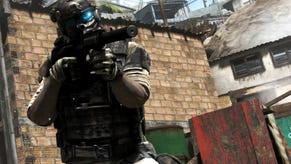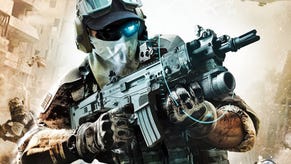Ghost Recon Preview: Rebuilding the Future Soldier
Ubisoft's tactical shooter takes a turn for the better.
Ghost Recon: Future Soldier ain't quite what it used to be. When it first broke cover - and when we last took a serious look at it - Ubisoft's tactical shooter series had evolved into something far removed from the games of old, having become an action-heavy third-person shooter starring a soldier who was, in Ubisoft's own words, "an F-16 on legs". It had turned into Gears of Recon, and it proved an unpopular shift in direction for a series once known for its tactical smarts.
"We'd just finished Ghost Recon Advanced Warfighter 2, but that was just an iteration of the first Ghost Recon Advanced Warfighter," creative director Jean-Marc Geffroy says of Future Soldier's first pass. "The team wanted to renew the game - they wanted to stay faithful, but they wanted to renew as well. And sometimes, when you're like that maybe you go too far in one direction."
Remember the over-powered exoskeleton, the class system and the player tethering discussed at the game's reveal? Forget about it - all of it - as today's version of Future Soldier is a world away from the one first shown in 2010.
"The team was thinking about changing the game, and at the same moment we were working with consultants," says Geffroy on the decision to switch tracks with Future Soldier. "It was interesting - at this time, we needed another view from someone who could tell us that maybe it's a great game, but from a military perspective, it's just s**t.

"It was at this moment where we thought that we're too sci-fi - we had some good input from Special Forces who told us what really is their job. It was the right moment to change. We didn't change the engine, we didn't change a lot of stuff - but we changed the design, the visuals and the mission system."
It's one hell of an about-turn, although it's an about-turn that's hardly alien to Ubisoft, nor to Tom Clancy's extended family of games. I Am Alive recently shifted from a sci-fi survival horror to a taut downloadable action game, swapping studios in the process, while Splinter Cell: Conviction famously debuted with a hobo Sam Fisher and an elaborate combat system that were both never to be seen again.
Future Soldier's been taken down a similar path, and in its roundabout journey in the last six years it's ended somewhere near to where the series left off. Having flirted with gung-ho heroics, it's now returned to the considered yet fast-paced tactical shooting of the Advanced Warfighter games - which, if you can recall the brace of Ghost Recon games that came at the dawn of this generation, is no bad thing at all.
Gone is the gung-ho shooting, and in its place is squad-play that's easily directed and pleasing to tinker with. You're one of a team of four - there's no divide between single-player and online co-op in the campaign - sent out to fight in a series of nondescript and slightly over-familiar scenarios.
But - and don't tell poor old Tom this - no-one plays the Clancy games for their gripping stories. It's about technology and battleground wit, both of which empower the action and help elevate it above fellow third-person shooters, including the kind of game that Future Soldier once threatened to be.
The over-the-top technology of Future Soldier's old self has been removed, but in its place is a selection of gadgets that look just as satisfying and that have woven wonderfully into the game. First there's a remote-controlled drone that looks like it's fallen from the pages of the Innovations catalogue - it can be driven across land or flown across a short range, picking out targets and giving the lay of the land. Sensor grenades perform a similar trick, marking out nearby enemies.
Both of these tie into Future Soldier's other key introduction, a feature dubbed 'scan and execute'. It's remarkably similar, both in practice and in name, to Conviction's mark and execute; enemies can be tagged and then taken down, but the ability has been embellished. With the emphasis on co-op play, it's possible to tag kills for squad-mates before giving the order to pull the trigger, at which point the action trickles into bullet-time.
Unlike Splinter Cell: Conviction, there's no economy keeping use of scan and execute in check. It was always an awkward and somewhat nonsensical limitation, but by removing it, Future Soldier runs the risk of over-powering the player - the cool, clinical run-through that was once the reserve of the skilled and patient now becomes the default way to play.
But Ubisoft's level designers seem to be having fun exploring the possibilities and stretching out the mechanics across a variety of scenarios. Stalking a military leader through a Bolivian camp requires stealth and a steady nerve, and Future Soldier's active camouflage - again, a feature that's kept relatively unchecked and is available at all times - removes some of the frustration inherent in other games of hide and seek.
An abandoned traffic jam in Pakistan shows signs of the more action-oriented game that Future Soldier nearly was, an explosion of noise and colour that funnels you through a thin, enemy-infested strip of road. It allows Future Soldier's cover mechanics to reveal themselves - it's fast and snappy in this regard, and with the ability to roll in and out of cover when lying prone it makes for equally fast and snappy combat - as well as revealing a handful of other quirks.
Come under fire from a heavy machine gun and Future Soldier's suppression mechanic kicks in, layering a dose of shaky-cam that makes it hard to fire off a clean shot in return. The solution tends to be sending a squad-mate out to take care of the unit - a small snapshot of how Future Soldier is placing an emphasis on both the tactical and the shooter sides of its genetic make-up.
The tactics and the shooting seem to be working in harmony now, restoring the balance that made both Advanced Warfighters such a success. It's a different game to the one Ubisoft once intended - but it's most definitely a better one.
